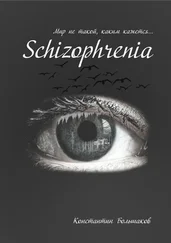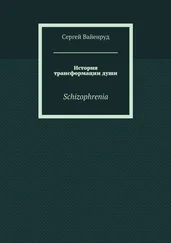1 ...6 7 8 10 11 12 ...20 Suggestions for revising existing diagnostic practices have also been proposed by scholars outside of the mental health professions. For example, Nikolas Rose, a British sociologist, spent decades questioning the psychiatric enterprise and defending a move from “diagnosis” to “formulation.” According to Rose’s distinction, a complex story (one that includes the causes of the person’s distress and that follows how their experiences might have penetrated “under their skin”) would be just as appropriate in clinical practice as using a “name” to label a categorical diagnosis. Moreover, assessing the person’s capabilities and impairments would be much more useful when planning their needs for receiving mental health services. The move from labels like “schizophrenia” to a story told about the person’s overall situation and station in life, the biological, psychological, and social factors that have caused and shaped their ailment and suffering, and the identification of their required current care, would demand more listening on the part of everyone involved. Such listening, Rose argues “would be all to the good.” 37
Other voices in this larger conversation want to bring the diagnosis of schizophrenia to an end for very different reasons. Some psychiatrists, psychologists, social activists, survivors, ex-patients, and others have argued that the label “schizophrenic” is stigmatizing, due to the connotations of hopelessness, chronicity, and even dangerousness, that it carries. In response to this and to patients’ suffering, they seek alternative, less discriminatory, and more appealing, diagnoses. “Extreme mental states,” “voice-hearing,” “non-ordinary states,” or “diverse identities” are but a few of these suggested alternative designations.
Madness from Antiquity to the Present Day
This book proposes to tell the story of the possible end of schizophrenia as a diagnosis by shedding light on the early history and recent usage of this controversial term. While other medical or psychiatric terms that define abnormal mental states and behaviors – such as melancholia, mania, or “insanity” – date back to antiquity, schizophrenia is a relatively new technical term. That said, the perennial difficulty in characterizing abnormal mentalities and behaviors (either as discrete forms of human existence, or as part of a continuum between the normal and abnormal) goes all the way back to the Hebrew Bible and the New Testament, as the first chapter of this book explains.
As Hacking observed, the idea that it is impossible to retroactively diagnose individuals is a product of the “academically correct official history-of-medicine or philosophy-of-science teaching.” 38Nevertheless, if we set aside academic propriety and the potential self-righteousness it implies, we can follow Hacking and still carefully draw inferences from the way past cases were viewed by contemporary experts. The first chapter in this book thus uses foundational texts in Western culture, ranging from the Bible all the way up to Eugen Bleuler, to reconstruct the origins of the dispute on the relations between the normal and the abnormal (distinctness vs. continuity) when diagnosing individuals who suffer from a severe break in their perception of reality and withdraw from engagement with their social groups.
In Chapter 2, “The Birth of ‘the Schizophrenias,’” we introduce the two major modern authorities on schizophrenia of the late nineteenth and early twentieth centuries, Emil Kraepelin and Eugen Bleuler. In their paradigmatic texts – Kraepelin’s Psychiatry: A Textbook for Students and Physicians (1896) and Bleuler’s Dementia Praecox or the Group of Schizophrenias (1911) – we will locate the crucial terminological change that appeared in the emergence of modern psychiatry’s dispute over the nature of mental disorders, when the older category of dementia praecox was replaced with the new term, schizophrenia. As we will see, Kraepelin’s and Bleuler’s works can be considered as condensed forms of the two competing – categorical vs. dimensional – paradigms, which remain at the very heart of current debates on schizophrenia.
Chapter 3then discusses these paradigms in the work of Sigmund Freud, the founding father of psychoanalysis. In his early works, Freud proposes that schizophrenic behavior lies on a continuum, running from neurosis to psychosis. In his later writing, however, Freud argues that schizophrenic behavior is different in kind from more typical behavior, even though he concedes it occurs concurrently with behaviors that are viewed as normal. As we will see, Freud’s legacy of oscillating between these two structurally distinct paradigms continues to shape the discourse of psychoanalysis on schizophrenia and psychosis to this day.
Chapter 4, “A Moving Target,” examines how the diagnosis of schizophrenia has changed over time. Tracing the definition of schizophrenia in the DSM from 1952 to 2013, this chapter analyzes the critiques and commentaries that professional task forces, activists, journalists, patients, and families have extended to every definition of schizophrenia proposed in the manual’s seven different editions. It concludes with the DSM-5’s declaration that it will systematically consider ethical questions and pragmatic matters in its efforts to revise the classification of psychiatric disorders.
In light of these ethical considerations, Chapter 5, “Hearing Voices,” then discusses a relatively new form of protest against the diagnosis of schizophrenia. It discusses the example of the Hearing Voices Movement (HVM), which challenges the pathologization of voice-hearing and its systematic association with the diagnosis of schizophrenia. Indeed, while hearing voices was historically considered as one of the central symptoms of schizophrenia, the Hearing Voices Movement depicts it as a natural part of human experience, one that should not be relegated to a separate and abnormal domain. As we will suggest, this change in the interpretation of voice-hearing can be viewed as yet another incarnation of the dimensional model.
Chapter 6, “Stigma and the Problem of Naming,” examines the decline of “schizophrenia” as a consequence of the stigma carried by the term itself, which, as some argue, leads to harmful discrimination. 39This chapter explores the various calls for changing or dropping the name “schizophrenia” altogether around the world. As we will see, successful examples of name changes in Asian countries have provided both food for thought, and challenging inspiration, for Western attempts to reduce stigma and find alternative labels for the diagnosis.
The final chapter, “The Ethics of a Diagnosis,” examines the rise and fall of schizophrenia in light of two competing philosophical models, that reveal the shifts in our understanding of a deeper, metaphysical structure. While the first model is open, continuous, inclusive, and dynamic, the other is closed, discontinuous, exclusive, and static. In light of these dual poles, the ethical implications distilled from the material discussed in the preceding chapters are evaluated.
As will become apparent throughout these chapters, this book ultimately explores the suggestion that the fundamentally eccentric nature of what we have come to call schizophrenia lends itself to contrasting interpretations, which reveal much deeper structural oppositions, between continuity and discontinuity, equilibrium and disequilibrium, and, ultimately, vitalism and mechanism. As these distinctions are unavoidable yet revisable, it is a critical and clinical imperative to use them provisionally and prudently. Scholars and theorists, psychiatrists and psychologists, psychoanalysts and mental health advocates, must all keep the pragmatic aim of healing patients firmly in mind when using classifications that are just that: “labels.”
Читать дальше












